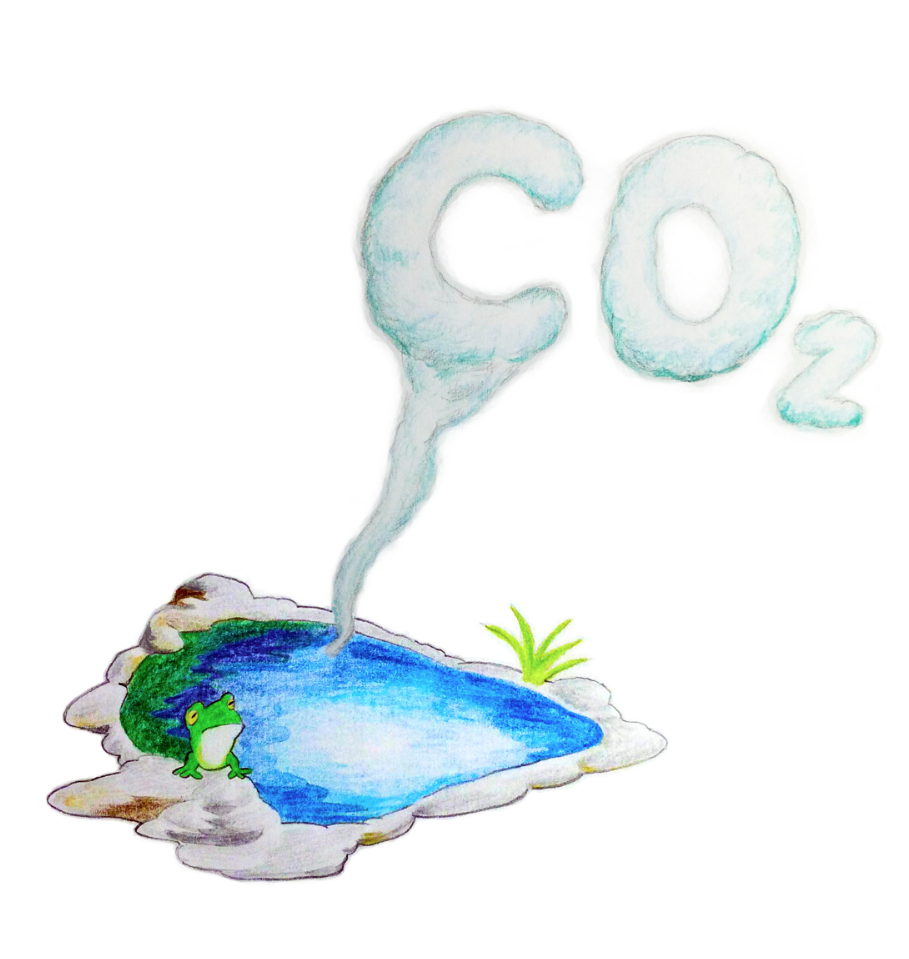
Research from the Yale School of Forestry & Environmental Studies suggests that small ponds have a significant and often under-reported effect on greenhouse gas emissions.
Previous carbon-cycle estimates overlook the contributions made by ponds of area less than 1,000 square meters, lead author Meredith Holgerson GRD ’17 said. Since these ponds are tiny and numerous, it is nearly impossible to count and measure all of them, she added. However, the study found that these small ponds, which amount to 8.6 percent of all lakes and ponds by surface area, release a disproportionately large percentage of the total carbon dioxide and methane emissions — 15.1 percent and 40.6 percent, respectively. The research was published in the science journal Nature on Feb. 1.
“By overlooking the effects of small ponds, we could be overestimating the amount of carbon that is stored in the forest,” Holgerson said. “How much carbon our forests can store is a big part of predictions regarding future climate change, so if we are overestimating that, it would be problematic for those future projections.”
The physical differences between small ponds and larger lakes account for the higher percentages of carbon dioxide and methane emissions from small ponds, Holgerson said. Bodies of water advance the carbon cycle by exchanging greenhouse gases with the atmosphere. Both ponds and lakes undergo a process known as stratification, in which the water splits into discrete layers due to changes in the density of water created by differing temperatures.
Unlike lakes — which experience stratification based on seasonal changes — small ponds, which are not very deep, stratify into layers during the day, and those layers mix together during the night. When that mixing happens, more carbon dioxide and methane are created from the sediment at the bottom of the lake, which contains a significant amount of terrestrial carbon — carbon-rich solid matter including leaf litter. Those gases are then circulated through the pond, and released into the atmosphere. Larger lakes stratify for longer periods of time during winter and summer, and mix when the weather changes in the spring and fall. While the lake is stratified, the terrestrial carbon is stuck at the bottom and does not circulate through the water, and less carbon dioxide and methane are released, Holgerson said. As a result of these patterns, small ponds are more important to the carbon cycle than one might expect, she added.
In-depth research into the exchange systems in small ponds is largely unprecedented, said David Skelly, F&ES professor and Holgerson’s advisor.
“Freshwater scientists tend to break out into cliques, and the people who study very large lakes and oceans tend to look a lot at physical processes like energy transfer and the carbon cycle,” Skelly said. “But that perspective has not really been brought to small ponds.”
The lack of interest in understanding the global effects of small ponds may be due to difficulties in obtaining clear data. The kind of imaging needed to see small ponds has not been applied on a global scale, Skelly said. The researchers had to use estimates based on the places on the Earth where ponds have been counted. They used a method called metadata analysis, which involved looking at a massive amount of published data on small ponds, and extrapolated global small-pond emissions, F&ES professor Peter Raymond said. In total, they analyzed data on 427 lakes and ponds in order to put together the estimates in the report. But with improved satellite and imaging technology, Skelly believes that these estimates can be further refined.
“This paper raises a flag and says, the effects these small ponds have are important, so we need to go out and get better numbers,” Skelly said.
The carbon cycle was discovered by Joseph Priestley and Antoine Lavoisier.







